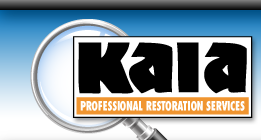FLOOD DAMAGE
Immediate Response to building leaks and floods is necessary. This means within 24-48 hours all of the critical steps need to be taken if you want to maximize the chance of avoiding a costly mold cleanup project.
What is a Flood?
In plain English, a flood is an excess of water or mud on land that is normally dry. A flood is a condition that occurs when water overflows the artificial or natural boundaries of a stream, river, or other body of water onto normally dry land. Floods often happen due to heavy rainfall or thawing snow.
Flood Statistics
- Your home has a 26% chance of being damaged by a flood during the course of a 30-year mortgage, compared to a 9% chance of fire.
- The average annual U.S. flood losses in the years 1996-2005 was more than $2.4 billion.
- Since 1918, the NFIP has paid $26.3 billion for 697,912 flood insurance claims and related costs.
Surface Disinfection: After area flooding, it is safe practice to assume that septic or sewage contaminants accompanied the floodwaters, so disinfection of all building surfaces is part of the cleaning process.
Knowing the Equipment Used
One of the reasons why basements are prone to flooding is became of its proximity to the water table. The risk also increases if the watet table is high. wien it rains, the ground can become inundated with water and if the home has cracks in the foundation, water can enter your home. There are some people who have already identified this problem and installed sump pumps as a remedy. A sump pump is a piece of equipment that is especially designed to extract liquids from a low-lying place such as a basement.
Protective measures should be taken before a flood to reduce hazards as a disaster strikes Here are a few steps you can take to reduce danger once a flood is suspected:
- Build barriers such as levees, beams, and floodwalls to stop floodwater from entering your home. Barriers are extremely important to protect the lower levels of the building, mainly basements.
- If you are planning any construction project, avoid building in a floodplain. If you must construct in a floodplain, be sure to elevate and reinforce your home and foundations.
- Elevate the furnace, water heater, and electric panel to a level, higher than the water reach.
- Install check valves in sewer traps to prevent flood water and sewage from backing up into the drains of your home when flooded.
- Check Insulation and seal external walls with waterproofing compounds.
Our structural drying specialists are trained in the use of Thermal Imaging. Through infrared technology we are able to locate trapped moisture that may not be visible to the naked eye. It is essential to dry all of these hidden areas to avoid mold from growing and becoming a problem.


